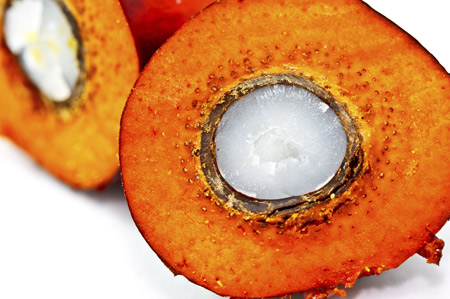Rapeseed futures could extend premium to soybeans
Category: Oilseeds
 (Agrimoney) – A 50% fall in rapeseed stocks this season could protect values of the crop somewhat from a troubled global oilseed market, according to UK crop bureau AHDB.
(Agrimoney) – A 50% fall in rapeseed stocks this season could protect values of the crop somewhat from a troubled global oilseed market, according to UK crop bureau AHDB.
In fact, there is potential for rapeseed futures to further increase their current premium to soybean prices.
“Based on the current outlook for this season, it’s likely that the premium will at the very least be sustained, helping to shield rapeseed prices from the full bearishness of the global oilseeds market,” said Dr Amandeep Kaur Purewal, senior analyst at AHDB.
Rapeseed premium
Paris rapeseed futures are currently trading at a steep premium to Chicago soybeans. Last week, the premium reached more than E60 a tonne, compared with a discount of over E50 a tonne a year ago.
Historically, rapeseed prices rise against soybeans when rapeseed stocks fall comparative to soybean stocks.
For 2015-16, the latest USDA forecasts point to a 50% year on year drop in global rapeseed closing stocks, while an increase of 7.8% is expected for global soybean closing stocks.
This month the French farm ministry raised its estimate for rapeseed production to 5.3m tonnes, still lagging last year’s crop of 5.5m tonnes.
And production in Ukraine is likely to suffer due to a very low planted area, with the US Department of Agriculture pegging production forecasts at 1.7m tonnes, down from 2.2m tonnes last year.
Bucking trends
But Dr Purewal cautions that there have been years when soybean stocks rose faster than rapeseed, but the price premium fell.
This was seen in the 2009-10 season, when China and the EU produced large rapeseed crops which lowered import requirements, at the same time as Chinese soybean demand grew.
In 2012-13 soybean prices rose compared to rapeseed, despite soybean stocks increasing and rapeseed falling.
“This discrepancy may be due to soybean prices rocketing in 2012-13 (as the market feared the worst during the severe US drought), which led to lower demand,” Dr Purewal said.
Uncertain output
And the market fundamentals have yet to be decided, she noted.
“Although we have a better idea of 2015-16 global rapeseed production, soybean output is still uncertain,” Dr Purewal said, pointing out that confirmation of the US soybean harvest would not be available for another couple of months, while South American plantings have yet to start in earnest.
“The level of demand (especially from China) will be a key factor throughout the season in helping to determine if rapeseed can sustain or indeed build on its current price premium,” Dr Purewal added.
Oil premium
Rapeseed oil is also trading at a premium to other key vegetable oils.
The USDA forecasts global rapeseed oil production to fall by around 5% in 2015-16, compared with the previous year.
“If realised, this will be the first annual decline in rapeseed oil production since 2006-07,” noted Dr Purewal.
“This suggests that we can expect a higher average premium of rapeseed oil over other vegetable oils in 2015-16 compared with last year and maybe even the previous few seasons.”
Resisting pressure
“Pressure from falling crude oil prices has contributed to an overall decline in vegetable oil prices recently, but the descent of rapeseed oil prices has not been as steep as for the other vegetable oils,” said Dr Purewal.
Rapeseed oil is trading at a $110 a tonne premium to soyoil, the highest since December 2013.
Rapeseed oil’s premium over palm oil reached $255 a tonne, at the end of August – the highest since July 2013.
And the discount to sunflower oil, which usually trades at a premium to rapeseed oil, has declined to $40 a tonne, from over $100 a tonne a few months ago.
Meal pressure
As a result, rapeseed oil is likely to lose market share to cheaper oils such as soy and palm.
But Dr Purewal notes that the impact of El Nino could threaten palm oil production in South East Asia, lifting palm oil prices and reducing their premium to rapeseed oil.
“Potentially, then, there could be a situation where the vegetable oil market has to look towards soy oil to satisfy demand,” she said.
Dr Purewal also noted higher soy oil output would lead to greater meal production, as a byproduct of soy crushing.
“Unless meal demand increases in tandem, meal prices could come under pressure,” she said.




